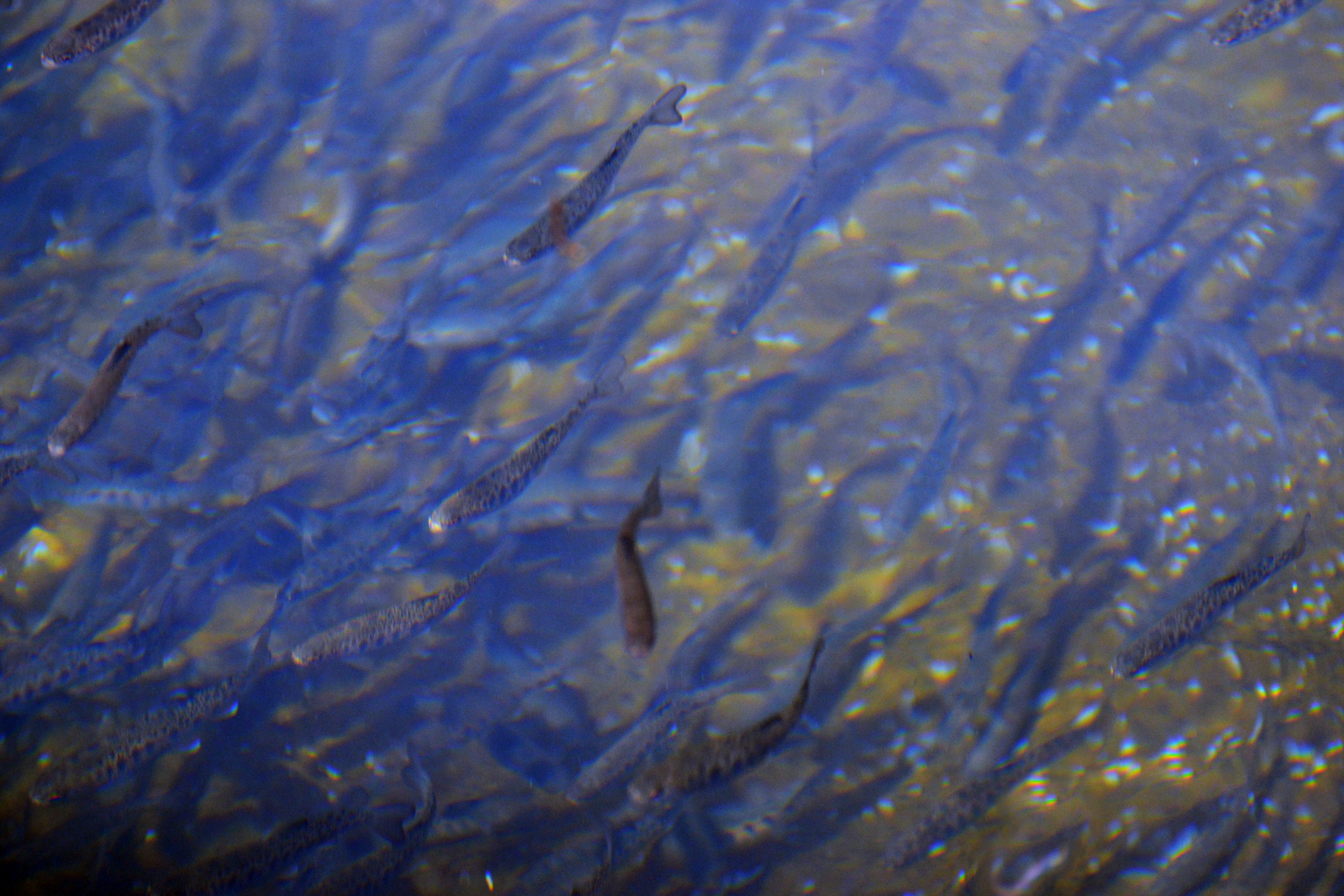Weren’t you always dying to know about the life cycle of the salmon louse? Well, I have to disappoint you – today’s report is about the problems of aquaculture, among which the louse is one of the biggest, and it will be discussed in this context only.

Why would I even bother? Well, one of the arguments offered in yesterday’s musing on the decline of ocean health and overfishing was the possibility of farmed fish filling our protein needs no longer covered by fish in the wild. Fish farms have, of course, become a huge business. Salmon is one of the biggest products of aquaculture, generating billions of dollars of income for Norway and Chile, the top producers in the world, but also other European countries like Scotland (the US ranks only 16th in aquaculture.)

And now there is a crisis for which we all pay – and I don’t mean with increased prices only for our favorite dinner either. Salmons are farmed in net enclosures that reach up to 165 ft down into the depth of the waters and have a similar diameter. In other words, they are stuffed together for the 2 years until they are slaughtered. They used to be fed with insane amounts of antibiotics, but that was eventually reduced to acceptable levels, because they figured out a way to vaccinate the baby fish against diseases.
(More detailed information can be found here in a publication of Le Monde diplomatique (alas only in German.)

That did not solve other problems, however. Lots of fish escape these nets when they are torn during storms, and then mix with wild salmon, endangering the gene pool with their degenerated genetic make-up. During the 2007 earthquake in Chile alone, 5 million farmed salmons escaped.
In addition, carnivorous salmon require too much other fish to eat. It takes 1,7 kg of small fish made into fishmeal to generate 1 kg of salmon. Attempts to change their diet to soy beans and grains have been not very successful, they refuse to eat it and get diarrhea. More of that diet will also lessen the omega-III-fatty acids that attract us to fish in the first place.

The biggest problem for aqua farming is the salmon or sea louse, however. It has killed 50 million salmon in Norway in 2016 alone. The 8-12 mm parasites glum onto the salmon and eat holes into their skin. They flourish in the conditions of these tight nets and the warming of the waters due to climate change, and now also spread to wild salmon when these migrate close by.
The lice are resistant to many insecticides; what is still in use is Emamectinbenzoat and Diflubenzoron (yes, they are as toxic as they are hard to spell), as well as Hydrogenperoxide (they now use 42 liters of that for every ton of aqua farmed fish….) Traces of these chemicals remain in the fish that land on our plates. And if one country prohibits use of certain chemicals, why, globalization allows the industry to spread to other parts of the globe.

The Norwegian salmon farming giant Cermaq has a sea lice emergency on their Clayoquot Sound salmon farms right now. Documents released through Access to Information indicate Cermaq obtained an Emergency Drug Release to use the insecticide Lufeneron to control sea lice in the Clayoquot Sound UNESCO Biosphere Region (British Columbia). That chemical was not approved by the Norwegian Government (and the application withdrawn with much secrecy.) This very month, it is used over here. And I quote:
“There are human health concerns with use of the drug, which resides in the fat of treated animals. The flesh of treated fish cannot be consumed by humans for 350 days after treatment. This raises questions around how Lufeneron-treated fish will be disposed of in the event of a mass die-off, and in the event of an escape, whether Lufeneron-treated fish might be eaten by a predator which could later be caught for human consumption.
“Lufeneron acts as a chitin synthesis inhibitor; it kills crustaceans like fleas and lice by preventing them from growing a new exoskeleton after moulting. This raises questions about its impact on aquatic organisms in the marine environment—particularly crustaceans like crab, shrimp and prawns”, said Glambeck. “Although the drug will be administered in freshwater hatcheries, it stays in the fish for a very long time. How much will be excreted by fish into the ocean? How long will Lufeneron persist once it settles beneath the fish farm? And how readily will it be accessible to sea creatures?”

The details of all this will be forgotten by me by tomorrow, but the principle will linger: there are no easy solutions to problems that were created by our interference with nature. The idea that depletion of wild fish can be compensated by harvesting farmed fish is only theoretically sound. In praxis the diseases nurtured by close-quarter farming and then the chemical treatment of those diseases generate health scares in their own right and potential longitudinal effects that we have not even begun to understand.
Lousy, indeed.
Music is self explanatory.







Deb Meyer
Wow, I planned on having wild grilled Salmon for dinner tonight, I might change my mind! This article has opened up my mind about the whole fish process.
Carl
Yikes!
Terry Thompson
David Attenborough, a person who I trust not to be a corporate lackey, recently stated that we can not stop the 6th extinction in any meaningful way, it is exponential. Fish cannot live in plastic,toxic seas.
Elon Musk stated that we, or should I say they,( the 1%), have a small window to get off this planet.
Anthropocentric narcissism is the Human blind spot. Eat on. Consume all, and reproduce.
Cynical, but accurate.